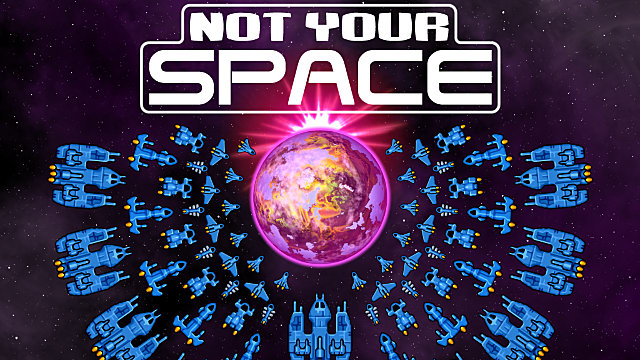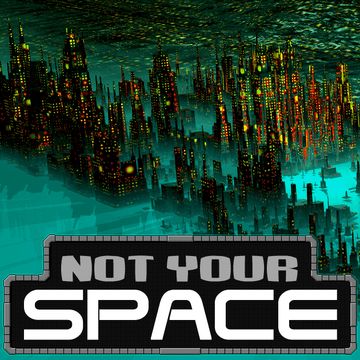The aim of the game is to destroy all races that oppose you. One of the unique features of Not Your Space is the ability is to turn off major settings of the game. If you don’t want to worry about collecting resources for building up your ships, then turn off the mining setting. If you want the ability to research new weapons and equipment to use on your ships, then turn on the research setting.
Recently I was able to get an interview with Bob and ask him a few questions about his game.
Daniel Williams (DW): So Not Your Space is the next game you plan to work on. Where did you get the idea for this real-time strategy game?
Then a year later, my friend David Gervais and I decided to give it a graphical update. That version got a lot of nice feedback, but I never did anything else with it.
Over the years, the idea of that game and the alien races I created for it stayed with me.
So after I finally released XenoBloom on Steam, I began prototyping an updated version of the RTS, and decided on “customization” as its core feature.
Players can experience a huge variety of gameplay based on which options they choose.
DW: Since this is a strategy game there is going to be a range of playable units for each race. What types of units would we expect to see in the game, like what type of fighters and frigates will be available to build?
The actual characteristics of these ships is determined by which race created them, their technology, and certain options the player may have selected.
The warships, from smallest to largest, are destroyer, cruiser, battleship, and dreadnaught.
You can assign one of four different weapons to every ship you build, as well as a type of defense. Or you can opt to have no differentiation between weapons, and no defenses at all. It’s really that customizable.
There’s also an option to give each type of ship a damage bonus against one of the other types. Cruisers are good at taking out destroyers, but destroyers can hit harder against dreadnoughts.
In the alpha demo, every destroyer looks the same, except for coloration. But when the Kickstarter is successful, I’ll be able to pay my artist to create beautiful individual ships for each race. He’s already produced some awesome prototypes.
Its also possible that I will introduce entirely new types of units and weapons.
DW: One thing that stood out on your Kickstarter page is your focus on artificial intelligence in the game. Could you give a bit more detail on what you plan to do with it?
DW: You have already done a lot of work for Not Your Space so far. Is there any part of the development you have been enjoying doing?
I doubt that I will be using anything truly ground-breaking: specific AI, fuzzy logic, and state machines. I might also apply some learned behavior over time, meaning the AI could save some data about its major choices in each game, and how effective they were. I don’t plan to create a “cheating” AI. The AI will follow the same rules as the human players.
There will be a high-level AI for each computer player that looks at its overall situation and decides what its focus should be: expansion, mining, defense, building ships, saving money, starting a major offensive, etc.
Then, there will be individual AIs that work for a specific part of the game: mining, research, ship design, ship building, colonization, etc. These smaller AIs will be influenced by what state the high-level AI has decided on, but they don’t interact with each other on this level.
The fleet AI is another mid-range component. It will look specifically at things like diplomatic states, how many and what kinds of units it has, whether it is currently being attacked, and what enemy units it can see. It will gather fleets together, and use them for attack, defense, patrol, exploration, etc. Or if it is already engaged in combat, it may try to withdraw the entire fleet if the ships are below a certain average health.
Finally there will be a unit AI. Mining ships will mine resources, colony ships will land on uninhabited planets, etc. But the bulk of this AI’s purpose will be centered around combat.
Damaged units may try to withdraw from the fight and repair. Healthy units may press the attack. There will be a fairly complex and race-specific targeting AI (I’ve gone into more detail about targeting AI in one of the Kickstarter updates).
Also, I am really enjoying the collaborative parts. The first time I saw the kinds of spaceships the artist is drawing, or heard the title track Devin composed, or I read the outlines for the stories Matthew is writing. It’s so wonderful seeing the different elements coming together for the world I want to create.
DW: Do you have any plans of bringing Not Your Space to any other gaming platforms?
DW: Is there anything else you would like to say before we finish up this interview?
I’d like to thank Bob Saunders for his time. If you are interested in Not Your Space, there is a demo available for the game from the Kickstarter page.


